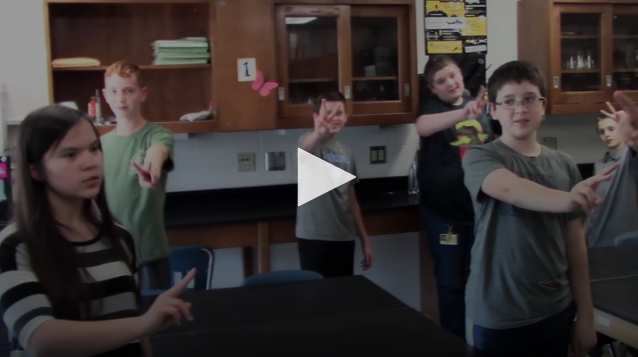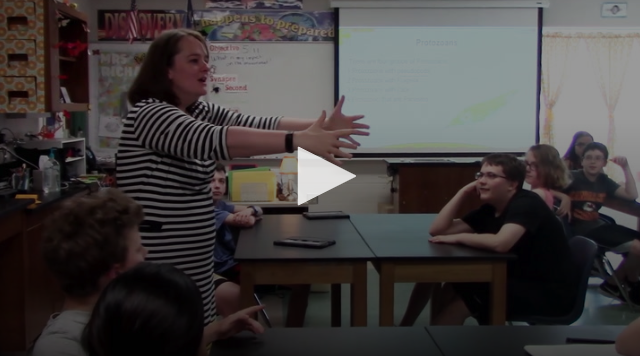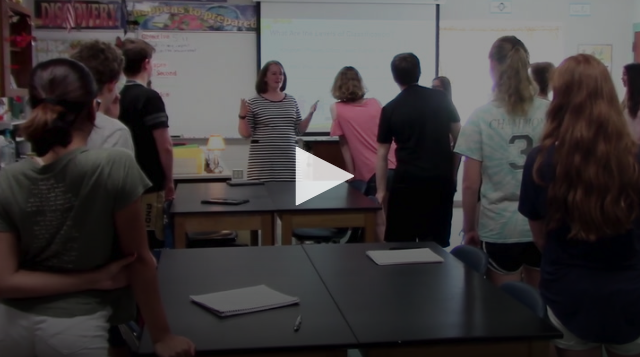That moment on the first day of school when a student comes into my classroom and says they hate science…
WHAT? How could anyone hate science?

This moment is typically followed with me betting one of the most precious classroom commodities (a pencil) that I can change their mind by the end of the year.
As educators, we know that students hating our content happens. But to my science-teaching soul, statements such as these are kryptonite. When I hear things like this from my students, at first I’m astounded. Then I come to find out the student usually has a good reason.
Students who make statements like this often follow up with, “It just doesn’t make sense to me.” As we prepare to head back into our classrooms this fall, we need to remember where our students may be coming from and strive to implement excitement with different strategies for sensemaking, so students can actively fall in love with learning in our classrooms.
Teaching Channel is putting cameras in the hands of teachers in the hopes of helping us get better together, and I was excited to film my classroom as part of the Tch DIY series. Together, Tch and I have assembled several videos that give you a window into my classroom to see how some of the ideas captured could help you to move your students towards sensemaking with active learning.
Gestures
Topics in science are often characterized by their movements. For example, the four types of animal-like protists. Mnemonic devices are an effective strategy for topics like this, but in my room, if something moves, we move. We strive to engage as many parts of the brain at one time as possible, while also targeting multiple learning styles. A gesture can be a quick, simple movement that connects a vocabulary word to an action representing its definition or characteristic. It might become total physical response that’s revisited in its entirety, or it may be something simple that becomes an attention getter (I use the word “pseudopod” in my classroom).
Another strategy I like to use is dancing. Dancing in science resembles a series of gestures put together in a systematic way. The bigger and goofier the gestures, the better — at least in middle school. There are reasons why children, even before they can talk, can remember the “Itsy Bitsy Spider” motions. Our brains connect the motions in our minds and help us remember — pure and simple. While dancing doesn’t seem to have a natural place in a content-driven subject like science, when it comes to defining essential vocabulary, it can be key.
In my room, we dance the definition of Symbiosis. Symbiosis is a word commonly misused on television, so it’s important to me that my students understand the intricacies of its meaning. Thus, we dance.
Marching
Like a gesture, marching engages multiple parts of the brain at one time. The first time I had my students march, I was shocked that they actually seemed to enjoy it. I felt like a drill sergeant… and yet they were smiling! I soon realized that it gave them something to connect otherwise mundane content to, and it was something simple and different that they would remember. In my class, we march the levels of taxonomy in order. The levels of taxonomy are a topic that with the Next Generation Science Standards implementation seem at times irrelevant; but as students work towards making sense of the fossil record, scientific names keep appearing. Really knowing the levels of taxonomy allows my students to better understand relationships through binomial nomenclature.
Singing
As I’ve shared before, I sing… a lot. Almost constantly. It could be described as a problem — of which I’m proud. Singing in science is one of my favorite ways to get students active in our classroom, though it’s arguably one of the hardest. When a student can hear a song related to your content, it becomes an earworm and gives them the opportunity to remember how they learned something at the most basic level. One of our favorite songs is the “Mitosis Song” (lyrics by Cay Miller), sung to the tune of Green Acres. This song combines singing and gestures and allows students to move their way through the stages of cell division, which helps with future application of a challenging concept.

Tips for Implementation
- Stay within your comfort zone. If you aren’t comfortable doing it, your students won’t be comfortable either.
- Start small: Gestures can be added to almost anything, but they’re only meaningful in context… so don’t overuse them.
- Explain why: Some students resist change unless they understand the “why.” Active learning is a strong pedagogical approach, but students may see it as silly. Don’t be afraid to explain to students the science behind why you’re asking them to engage with information in a new and different way. It may be just the the thing that encourages them to participate and take an active role in their learning process.
- Relationships and climate: Moving your content “out of the box” may be awkward for students initially. Before you start, put supports in place to encourage this type of learning (I make sure my students know I will look like the weirdest one in the room… so their peers will be looking at me and not them, on purpose).
- In the wise words of Miss Frizzle, “Take chances, make mistakes, get messy.” It’s not always easy, but that’s what makes it so great and, ultimately, so worth it for our students.









